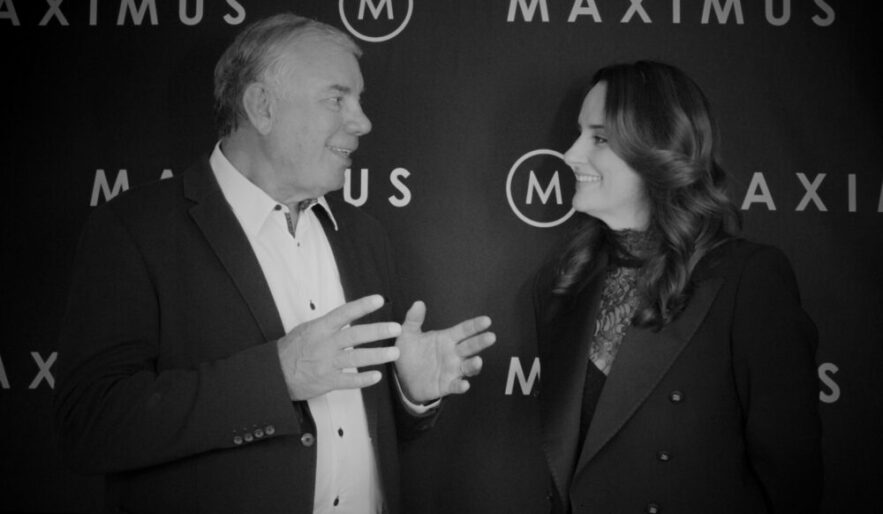It’s time for Australian companies to take a more disruptive approach to developing new-economy leaders. The first in this 3-part series highlights the need for more innovation.
As a leadership consultant, I’ve found the past year fascinating, thanks to Brexit, Donald Trump and our own Prime Minister. I can’t recall a time when the concept of leadership was so thoroughly analysed and discussed in public.
We need to have a similar conversation about our business leaders. If our economy is to flourish, Australia must find new growth horizons and grow corporate leaders who are future-focused. Yet most of our leadership development industry prioritises the needs of today.
Over 3 articles, I’ll share some insights from a white paper we recently produced at Maximus International in response to an obvious national leadership crisis. The series will focus on 3 critical areas: innovation, strategy and employee engagement.
HERE AND NOW THINKING
I recently spent time with Singularity University’s David Roberts, a global expert in disruptive innovation. He suggested that the ability to innovate is the single biggest driver of future growth. This applies to both companies and countries, and our government knows it.
The Turnbull government’s innovation agenda is the latest in a long line of similar government pronouncements stretching back to 1995. Sixty Commonwealth Government reports have relayed the same message: there’s a strong link between innovation and high performance companies, so to remain competitive in a changing world, Australian businesses need to be more innovative.
Two decades later, Australia languishes at the bottom of the Organisation for Economic Cooperation and Development (OECD) table for high-growth companies. Our research-industry collaboration levels are the lowest in the OECD rankings and government spending on R&D is just 0.4% of our GDP — slightly less than Greece. What’s more, between 2015 and 2016, Australia slipped from 17th to 19th in the Global Innovation Index (GII) — well below regional competitors such as Korea, Singapore and Hong Kong.
We can learn much from these countries and other top innovators, including Ireland, Iceland and Switzerland. Lacking natural resources, they mine knowledge and information instead.
Australia could do this too. The GII ranks us quite high for innovation inputs (capability) but low for innovation outputs (results). In other words, we have the ingredients, we just can’t make the cake. No government policy or funding incentive is going to change this. What we need is a fundamental shift in how business leaders foster and grow innovation.
I hear many excuses for lack of innovation — regulatory barriers, government failures, budget constraints. I believe there’s another reason: ingrained traditional thinking. For innovation to thrive, there must be the right mindset and a supporting culture. If these are absent, it’s a failure of leadership and of leadership development.
BECOMING AN INNOVATION CHAMPION
To lead an innovative organisation, you don’t have to be a scientific genius or technology whizz. But you must be curious, close to the market and able to nurture innovation.
Leadership development consultants should be advising clients to challenge traditional norms, with innovation and disruption at the fore. We need leaders who get up and out, are close to global megatrends and consumer behaviour, and understand leading indicators for changes to how people will work and live.
Next time you’re investing in leadership development, be proactive. Tell your HR team that innovation is an essential element, don’t accept a traditional development program and ask lots of questions.
- What kind of disruption is occurring in the market? Understand the difference between incremental changes that arise from continuous improvement and game-changing moves.
- How can we learn from others? Which industries and companies model how to stay close to megatrends or collaborate effectively? Is there value in visiting Silicon Valley’s technology giants or Israel’s science start-ups?
- How do we create an innovation culture? Is creativity rewarded? Do managers take risks? Do you know your customers intimately?
- What role does personal development play? Becoming an innovation leader is transformative and challenging. How do you prepare your people to have the courage to innovate?
- Is traditional development important too? New ideas can’t thrive without leaders bringing them to fruition so execution capability is also paramount.
The ability to use innovation as a competitive tool is an essential leadership skill for our future leaders. Let’s ensure Australia’s leadership development industry sets them up to succeed.








